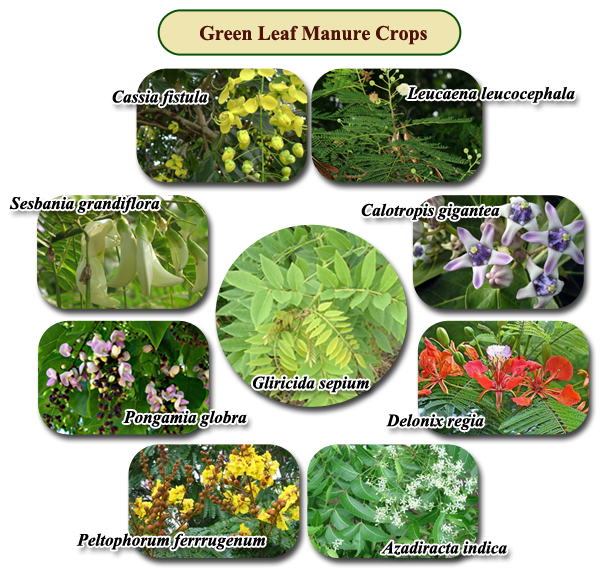 |
|||||||||||||||||||||||||||||||||||||||||||||||||||||||||||||||||||||||||||||||||||||||||||||||||||||||||||||||||||||||||
| Organic Farming :: Organic Inputs and Techniques | |||||||||||||||||||||||||||||||||||||||||||||||||||||||||||||||||||||||||||||||||||||||||||||||||||||||||||||||||||||||||
|
Green Manure
Green undecomposed material used as manure is called green manure. It is obtained in two ways: by growing green manure crops or by collecting green leaf (along with twigs) from plants grown in wastelands, field bunds and forest. Green manuring is growing in the field plants usually belonging to leguminous family and incorporating into the soil after sufficient growth. The plants that are grown for green manure known as green manure crops. The most important green manure crops are sunnhemp, dhaincha, pillipesara,clusterbeans and Sesbania rostrata.
Biomass production and N accumulation of green manure crops
Nutrient content of green manure crops
Sesbania rostrata is a stem nodulating green manure crop which is a native of West Africa. As it is a short-day plant and sensitive to photoperiod, the length of vegetative period is short when sown in August or September. A mutant (TSR-l) developed by Bhabha Atomic Research Centre, Bombay is insensitive to photoperiod, tolerant to salinity and waterlogged condition. Growth and nitrogen fixation is higher with TSR-l compared to the existing strains. Advantages
Application of green leaves and twigs of trees, shrubs and herbs collected from elsewhere is known as green leaf manuring. Forest tree leaves are the main sources for green leaf manure. Plants growing in wastelands, field bunds etc., are another source of green leaf manure. The important plant species useful for green leaf manure are neem, mahua, wild indigo, Glyricidia, Karanji (Pongamia glabra) calotropis, avise(Sesbania grandiflora), subabul and other shrubs.
Nutrient content of green leaf manure
Advantages
Source
|
|||||||||||||||||||||||||||||||||||||||||||||||||||||||||||||||||||||||||||||||||||||||||||||||||||||||||||||||||||||||||
Home | Schemes | Trainings | Related Information | Gallery | Contact | Disclaimer |
|||||||||||||||||||||||||||||||||||||||||||||||||||||||||||||||||||||||||||||||||||||||||||||||||||||||||||||||||||||||||
© TNAU 2008 - 2024 All Rights Reserved |
|||||||||||||||||||||||||||||||||||||||||||||||||||||||||||||||||||||||||||||||||||||||||||||||||||||||||||||||||||||||||

